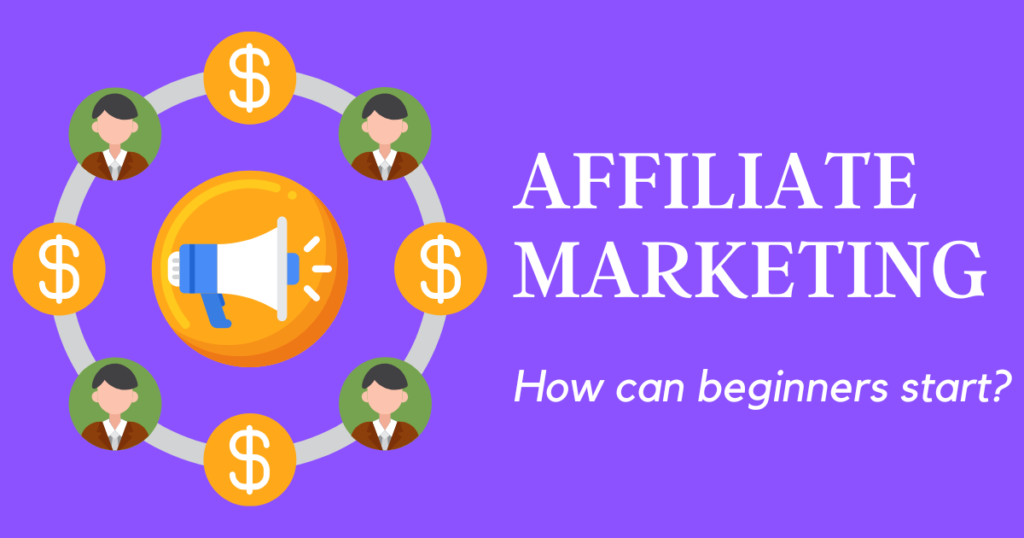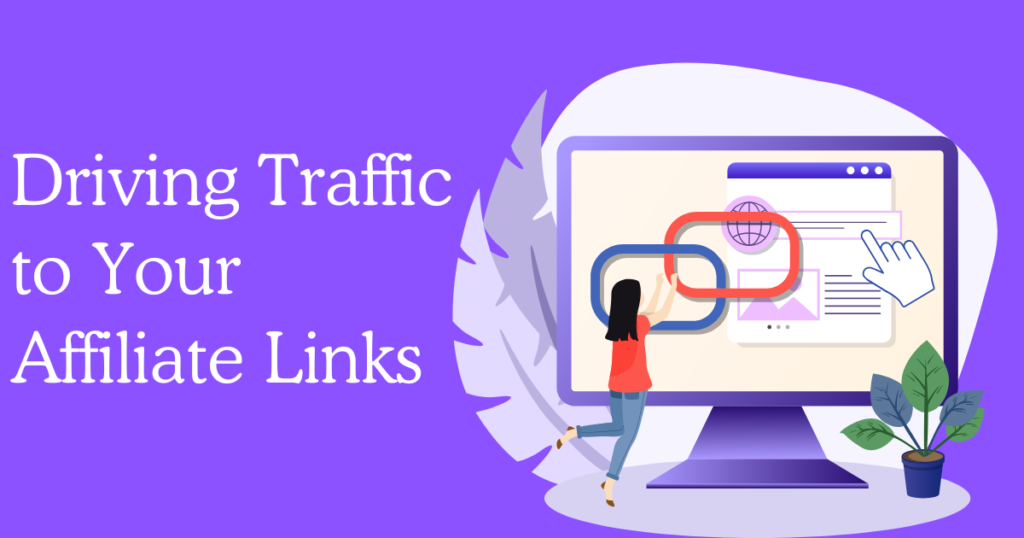Why Affiliate Marketing Is the Perfect Business Model for Beginners

Affiliate marketing is now a top way to earn online. And for good reason. You need only a small investment to start, and you can work flexible hours. If you handle it well, it can bring in passive income. For beginners, affiliate marketing is a goldmine. It awaits in the digital world. This guide has all the basics you need to know. It’s perfect for beginners in affiliate marketing. It has advanced tips to boost your revenue.
What is affiliate marketing?
Affiliate marketing works well for both merchants and affiliates. Merchants aim to sell more. They pay affiliates to bring in customers. They use special links to track referrals. If a customer clicks an affiliate’s link and makes a purchase, the affiliate gets a commission. It’s a cut of the sale. Take Amazon’s affiliate program, for example. It’s very popular. Millions promote its products. They earn commissions on sales via their links. This model is good for both. Merchants get more sales and visibility. Affiliates earn money from their marketing.
Why Start with Affiliate Marketing? Key Benefits to Consider

1. Minimal Investment, High Return Potential
Affiliate marketing lets you start without any inventory. You don’t need to create or hold it. You sell products and earn a commission for each sale. Most affiliate programs are free to join.
2. Flexible Work Hours and Location
Whether you’re a night owl or an early bird, affiliate marketing can work for you. You could be at a busy coffee shop or cozy at home while you work. If your internet is stable, you’re good to go. Affiliate marketing lets you work in the serene morning as the world wakes. You can work late at night when the stars shine. You could work from a tropical island or a mountain retreat. Make sure you have a reliable internet connection. It allows you to reach your audience and sell your products. This flexibility is a big advantage of affiliate marketing. It lets you work at your own pace and on your own terms.
3. Limitless Earning Potential
In affiliate marketing, your income has no ceiling. It depends on your effort and strategy. Affiliate marketers can earn more money. They have more freedom than people in typical jobs with steady pay. Many affiliates find success through their hard work. Take Michelle Schroeder-Gardner, for example. She’s a popular marketer who makes over $1 million a year. The chance to earn limitless income is driving the growth of affiliate marketing as a career.
How Does Affiliate Marketing Work?
Understanding the basic structure of affiliate marketing is crucial. Here’s a breakdown of the process:
- Merchant: The company that offers the product/service.
- Affiliate: The individual promoting the product in exchange for a commission.
- Consumer: The end customer who purchases through the affiliate’s link.
- Network (Optional): Many affiliate programs use networks to manage tracking, payments, and reporting.
The process is easy. An affiliate sign-up gets a unique link and then shares it via blogs, videos, or social media. If a user clicks the link and buys, the affiliate earns a commission.
Step 1: Choosing the Right Niche

Why Choosing a Niche Matters
Your niche is essentially the focus area of your content and products. A niche helps you target a specific audience. It makes it easier to attract readers who are likely to convert.
Tips for Selecting a Niche
- Identify Your Interests and Expertise: Succeeding in a niche you love is easier. For example, if you love fitness, start a blog. Then, promote workout products.
- Check Profitability: Some niches earn more than others. The popular ones are health and wellness, technology, personal finance, and fashion. Use tools like Google Trends and Amazon’s best-seller lists. They can help you find profitable niches.
- Check the Competition: A tough niche can make it hard for beginners to stand out. However, a mix of popular and specific aspects can provide a better start.
Step 2: Finding the Best Affiliate Programs

Once you’ve chosen a niche, the next step is to find the right affiliate programs. Here’s a quick look at the types of programs available:
Types of Affiliate Programs
- Pay-Per-Sale (PPS): The most common type, where affiliates earn commissions on sales.
- Pay-Per-Click (PPC): Affiliates earn based on the number of clicks, no matter if a sale occurs.
- Pay-Per-Lead (PPL): Earnings are based on leads generated, like sign-ups or email submissions.
Recommended Affiliate Networks
- Amazon Associates: Known for its diverse product range but low commission rates. Great for beginners.
- ShareASale: Offers a broad selection of merchants in different niches.
- ClickBank: Popular for digital products, with high commissions.
- Rakuten Advertising: Known for reputable brands and reliable payouts.
How to Evaluate Affiliate Programs
- Commission Rates: A good commission rate depends on your niche. Digital products often have higher rates than physical goods.
- Product Quality: Only promote products you trust. This builds credibility and your audience will value your advice.
- Payment Terms: Check payment methods, thresholds, and schedules. They can vary by program.
Step 3: Setting Up Your Platform

Which Platform Should You Use?
You can promote affiliate links on many platforms. Here are some of the best:
- Blogging: Blogs are a good start for beginners in affiliate marketing. They allow you to make content that draws in readers and gets clicks on affiliate links.
- YouTube: Video content is powerful. It allows you to make reviews, tutorials, and unboxing videos to highlight products.
- Social Media: Instagram, TikTok, and Pinterest are visual platforms. They suit niches such as fashion, travel, and food.
- Email Marketing: Building an email list lets you connect directly with your audience. You can send personalized recommendations to your subscribers. They often boost sales.
Setting Up a Blog
- Domain Name and Hosting: Pick a memorable domain name. Then, sign up with a host like Bluehost or SiteGround.
- Install WordPress: WordPress is a user-friendly platform ideal for beginners. It offers a wide range of plugins and themes.
- Create Compelling Content: Start with posts that offer value to readers. Answer common questions in your niche, provide tips, and write how-to guides.
Step 4: Crafting Content that Converts

In affiliate marketing, content is king. Here’s how to create content that engages readers and encourages clicks:
Types of High-Converting Content
- Product Reviews: Provide honest and detailed reviews. Discuss the pros, cons, and unique features. Include your experience, if possible.
- Comparison Articles: Compare two or more products to help readers make informed decisions.
- How-To Guides: These articles solve specific problems while subtly promoting products that help.
- Resource Lists: Examples include “Top 10 Tools for [Niche]” or “Must-Have Products for [Niche] Beginners.”
Content Creation Tips
- Use a Storytelling Approach: Don’t just list features. Tell stories of how the product helped you or others.
- Highlight Product Benefits: Focus on how the product can make a difference in the reader’s life.
- Use Visuals: Images, videos, and infographics make content more engaging.
Step 5: Driving Traffic to Your Affiliate Links

Traffic is key for affiliate marketing success. Here are proven methods to boost it:
1. Master SEO (Search Engine Optimization)
- Keyword Research: Use tools like Ahrefs, SEMrush, or Google Keyword Planner. They can find keywords for your niche.
- On-Page SEO: Optimize titles, meta descriptions, and headers.
- Backlinks: Network with other bloggers and websites to get backlinks. They will raise your site’s authority.
2. Leverage Social Media
- Post Regularly: Consistent posting keeps your audience engaged.
- Join Groups: Facebook groups, Reddit, and forums are great for sharing links and content.
- Try Influencer Marketing: Partner with influencers for broader reach in your niche.
3. Utilize Email Marketing
- Build a List: Use lead magnets (free resources) to grow your email list.
- Personalize Your Emails: Write targeted emails based on your subscribers’ interests.
- Avoid Over-Promotion: Maintain a healthy balance between valuable content and affiliate promotions.
Step 6: Track, Measure, and Optimize Your Performance
Tracking your performance is crucial for long-term success. Here’s what to monitor:
- Click-Through Rate (CTR): Measure how effective your call-to-actions are by analyzing clicks.
- Conversion Rate: Check what percentage of clicks lead to actual purchases.
- Earnings Per Click (EPC): Knowing your EPC shows how well your links perform.Tools for Tracking
- Google Analytics: Provides insights into traffic sources and user behavior.
- Affiliate Network Dashboards: Many networks offer built-in tracking.
- Heatmaps: Use tools like Hotjar to see where people

